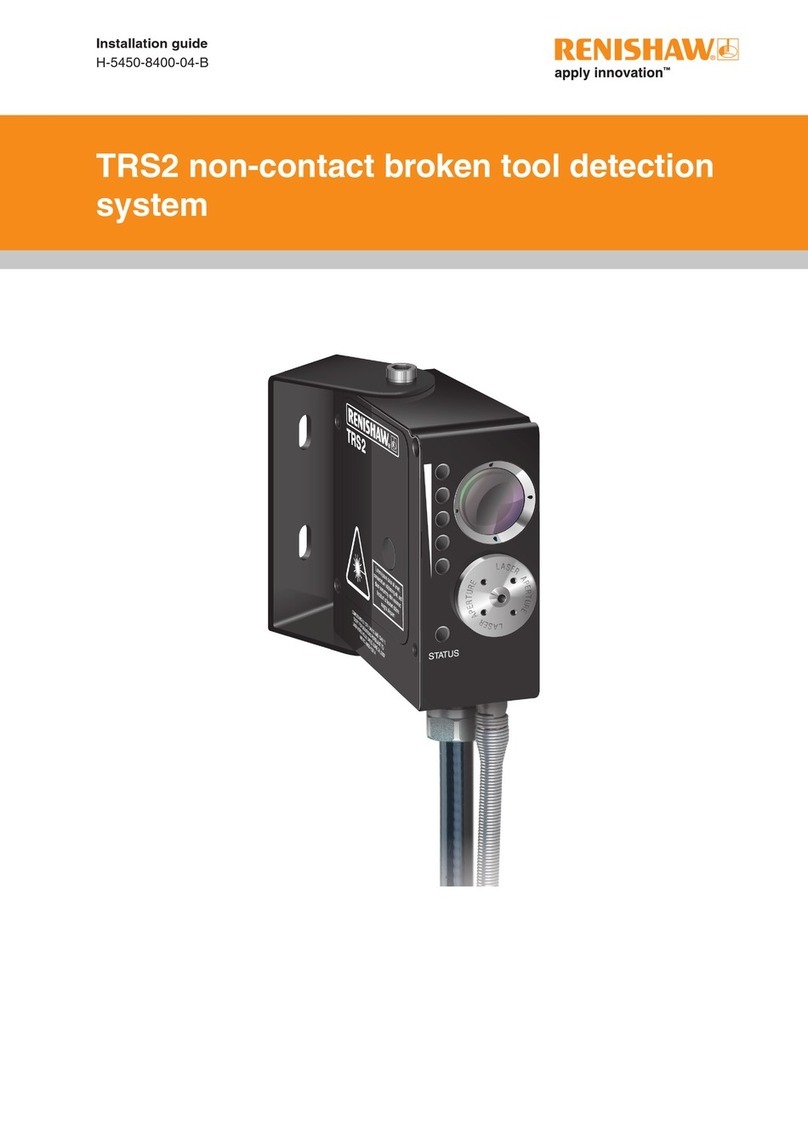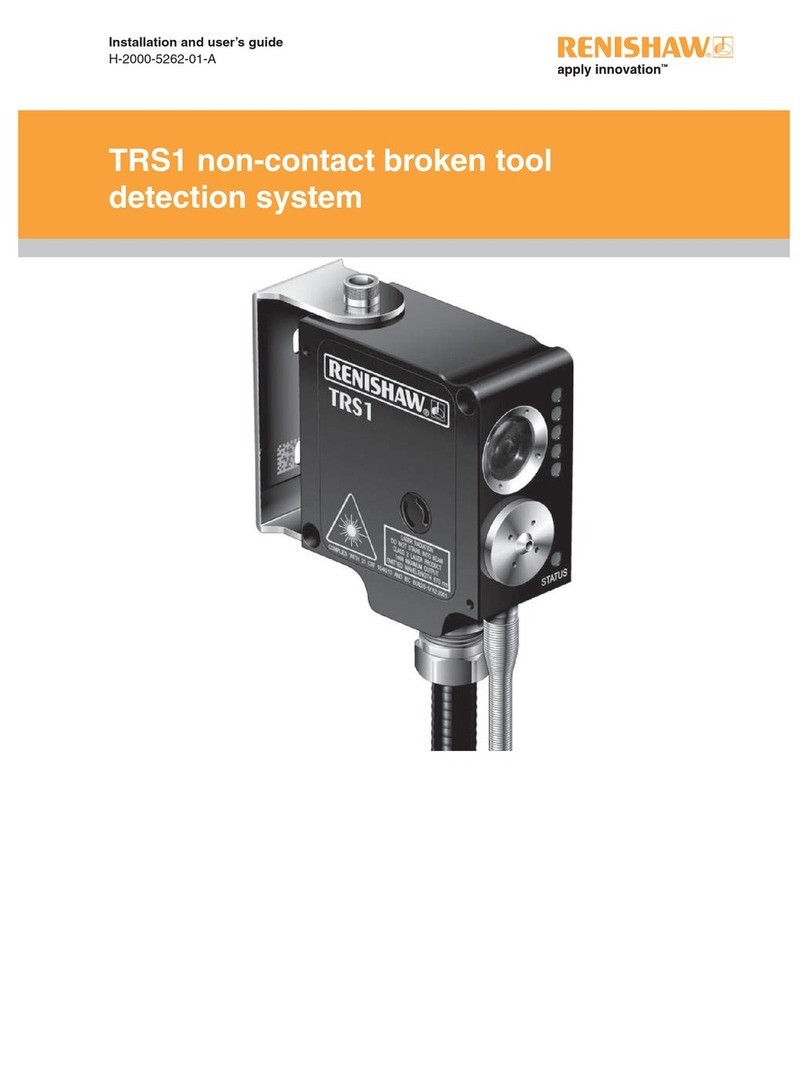
i
www.renishaw.com/trs2
Contents
Before you begin ...................................................................1-1
Warranty ...........................................................................1-1
CNC machines ......................................................................1-1
Care of the system ...................................................................1-1
Patents ............................................................................1-1
Software notices .....................................................................1-2
US government notice ...........................................................1-2
Renishaw software EULA.........................................................1-2
Intended use........................................................................1-2
Safety .............................................................................1-3
Information to the user ...........................................................1-3
Information to the machine supplier/installer ..........................................1-3
Information to the equipment installer ...............................................1-3
Equipment operation ............................................................1-3
Warnings ..........................................................................1-4
TRS2 basics .......................................................................2-1
Introduction.........................................................................2-1
Software routines ....................................................................2-1
Status indicator......................................................................2-1
Signal strength indication ..............................................................2-2
TRS2 typical performance .............................................................2-2
Dimensions of hard-wired TRS2 units and laser warning labels ................................2-3
Dimensions of TRS2 units with connector .................................................2-4
TRS2 specication ...................................................................2-5
System installation..................................................................3-1
Mounting the TRS2...................................................................3-1
Introduction....................................................................3-1
Mounting location guidelines ......................................................3-1
Mounting congurations ..........................................................3-2
Air supply ..........................................................................3-3
Air pressure ........................................................................3-3
Connecting and purging the air supply....................................................3-4
Air blast pack .......................................................................3-6
Electrical connections.................................................................3-7
Power supply ..................................................................3-7
Setting up the TRS2 system............................................................3-8





























